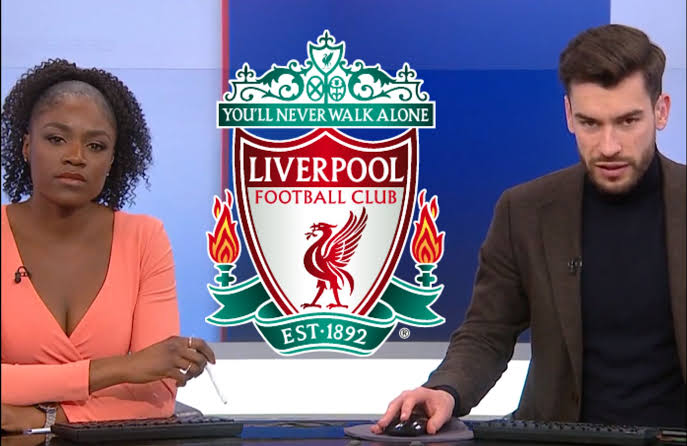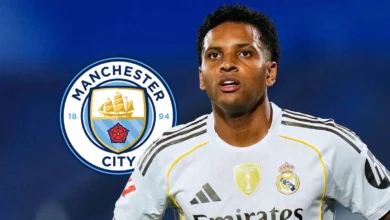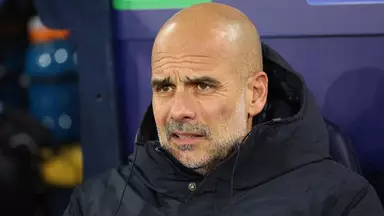Liverpool’s Centre-Back Transfer Strategy: Guehi and the Emerging Alternatives

As Liverpool Football Club navigates the complexities of the summer transfer window, one position has emerged as a clear priority for manager Arne Slot and the club’s recruitment team: centre-back. The departure of Jarell Quansah has left a noticeable gap in the squad’s defensive depth, while questions surrounding the long-term futures of key players have intensified the need for strategic reinforcement. At the heart of Liverpool’s defensive recruitment strategy lies Marc Guehi, the Crystal Palace captain who has established himself as one of the Premier League’s most promising centre-backs. However, with Palace’s valuation proving potentially prohibitive, the Reds have begun to explore alternative options that align with their preferred recruitment profile.
The timing of this defensive rebuild is particularly crucial as Liverpool seeks to maintain their competitive edge under Slot’s stewardship. The Dutch manager, who replaced Jurgen Klopp in what many considered an impossible transition, has brought his own tactical philosophy and player preferences to Anfield. His emphasis on versatile defenders who can contribute to both defensive solidity and attacking phases has shaped the club’s approach to this summer’s transfer business, with centre-back recruitment becoming a fascinating case study in modern football’s evolving defensive requirements.
Marc Guehi represents the archetypal modern centre-back that Liverpool desperately seeks. At 24 years old, the Crystal Palace captain embodies the perfect blend of youth, experience, and leadership qualities that align with Liverpool’s long-term vision. His journey from Chelsea’s academy through loan spells to establishing himself as Palace’s defensive cornerstone mirrors the developmental pathway that Liverpool has historically favored for their key signings.
Guehi’s technical profile makes him an ideal fit for Slot’s tactical system. Standing at 6’0″, he possesses the physical presence necessary for Premier League defending while demonstrating the ball-playing abilities that are increasingly crucial in modern football. His distribution from the back has been a key component of Crystal Palace’s build-up play, with his passing accuracy and range allowing him to initiate attacks from deep positions. This dual capability of defending robustly while contributing to possession-based football aligns perfectly with Liverpool’s tactical evolution under their new manager.
The England international’s leadership qualities add another dimension to his appeal. Having captained Palace through challenging periods and demonstrated maturity beyond his years, Guehi represents the type of character that Liverpool values in their squad. His ability to organize defensive lines, communicate effectively with teammates, and maintain composure under pressure are attributes that would seamlessly integrate into Liverpool’s established defensive culture alongside players like Virgil van Dijk.
However, the financial realities surrounding Guehi’s potential transfer present significant challenges. Crystal Palace’s valuation of their captain has become a source of considerable debate, with reports suggesting figures ranging from £50 million to £65 million. This disparity in reported valuations reflects the complex negotiations that often characterize high-profile domestic transfers, where selling clubs possess significant leverage due to lengthy contract situations and the inflated nature of the Premier League market.
Palace’s position is understandable from a business perspective. Guehi represents their most valuable asset, and his importance to their tactical setup cannot be overstated. His departure would necessitate significant reinvestment in the squad, and the timing of his contract situation provides Palace with justification for their substantial asking price. The club’s hierarchy recognizes that losing Guehi for free next summer would represent a massive financial loss, creating pressure to maximize his transfer value while they retain negotiating power.
For Liverpool, the challenge lies in balancing their valuation principles with the realities of the current transfer market. The club’s recruitment philosophy has traditionally emphasized value and potential, seeking players who can provide long-term returns on investment rather than short-term fixes. Guehi’s age profile and potential for further development make him an attractive proposition, but the asking price tests Liverpool’s willingness to deviate from their established spending patterns
Recognizing the potential complications in securing Guehi’s services, Liverpool’s recruitment team has identified two alternative targets that align with their preferred player profile: Giovanni Leoni from Parma and Konstantinos Koulierakis from Wolfsburg. These selections reflect the club’s strategic approach to talent identification, focusing on young players with significant potential for development rather than established stars commanding premium fees.
Giovanni Leoni represents one of Italian football’s most exciting defensive prospects. At just 18 years old, the Parma defender has already demonstrated the qualities that attract Europe’s elite clubs. His breakthrough season in Serie A, featuring 17 appearances and one goal, showcased his adaptability and maturity in one of football’s most tactically demanding leagues.
Leoni’s physical attributes immediately catch the eye. Standing at 6’4″, he possesses the aerial dominance that modern centre-backs require, particularly in the Premier League’s physical environment. His height advantage would be particularly valuable in defending set pieces, an area where Liverpool has occasionally shown vulnerability. Despite his imposing frame, Leoni demonstrates surprising mobility and agility, allowing him to cover ground effectively and engage in high-line defending.
The Italian’s technical development has been equally impressive. His comfort in possession and ability to play out from the back align with contemporary defensive requirements, while his reading of the game suggests an understanding of positioning that belies his age. Serie A’s tactical sophistication has provided Leoni with an ideal developmental environment, exposing him to complex defensive scenarios and varied attacking styles that would serve him well in adapting to Premier League football.
What makes Leoni particularly attractive to Liverpool is his versatility. His ability to operate at right-back provides tactical flexibility that Slot values highly in his squad construction. This adaptability would allow Liverpool to utilize him in multiple roles, providing cover for different positions while he develops his preferred centre-back skills. The capacity to deploy players in various tactical setups has become increasingly important as fixture congestion intensifies and tactical requirements evolve throughout seasons.
From a developmental perspective, Leoni’s age presents both opportunities and challenges. His youth means that he would likely require time to adapt to the Premier League’s intensity and Liverpool’s specific tactical demands. However, this extended development period could prove beneficial for both player and club, allowing for gradual integration while building toward long-term success. Liverpool’s track record with young defensive talents suggests they possess the infrastructure and patience necessary to maximize Leoni’s potential.
Konstantinos Koulierakis represents a slightly different profile, offering more immediate experience while maintaining the youth that Liverpool prioritizes. At 21, the Wolfsburg defender has already established himself as a regular in both club and international football, suggesting a maturity that could facilitate a quicker transition to Anfield.
Koulierakis’s season statistics paint the picture of a well-rounded defender contributing significantly to his team’s success. His 38 appearances for Wolfsburg, accompanied by three goals and three assists, demonstrate his ability to impact games at both ends of the pitch. The Bundesliga’s tactical sophistication and physical demands have provided him with excellent preparation for the challenges he would face in English football.
The Greek international’s versatility mirrors that of Leoni, with his ability to operate at left-back providing additional tactical options for Slot. This flexibility becomes particularly valuable during injury crises or when tactical adjustments require personnel reshuffling. His experience in different positions suggests an understanding of various defensive responsibilities and the spatial awareness necessary for effective positional play.
Koulierakis’s international experience adds another dimension to his profile. His establishment in the Greek national team indicates recognition of his abilities at the highest level, while exposure to international football provides valuable experience in high-pressure situations. This international pedigree often translates effectively to club football, particularly in high-stakes matches where experience and composure become crucial factors.
From a tactical perspective, Koulierakis’s playing style appears well-suited to Liverpool’s requirements. His ability to defend aggressively while maintaining positional discipline would fit naturally into Liverpool’s high-intensity pressing system. The Bundesliga’s emphasis on tactical discipline and positional play has likely prepared him for the structured defensive approach that Slot implements, making his potential integration more straightforward than might be expected from a young international transfer.
Understanding Liverpool’s interest in these particular players requires examination of their current defensive situation and long-term strategic requirements. The club’s defensive structure faces several challenges that necessitate careful planning and strategic investment.
Virgil van Dijk remains Liverpool’s defensive cornerstone, but at 34, questions about his long-term future inevitably arise. While the Dutch captain continues to perform at the highest level, succession planning becomes increasingly important as he enters the latter stages of his career. The club’s recruitment strategy must balance immediate needs with future requirements, ensuring defensive stability throughout any eventual transition.
Ibrahima Konate’s contract situation adds another layer of complexity to Liverpool’s defensive planning. With the French international entering the final year of his deal, uncertainty surrounds his long-term commitment to the club. Konate’s injury history, while not devastating, has raised questions about his reliability as a long-term defensive partner. The club’s interest in young centre-backs reflects awareness of these concerns and the need for adequate depth and competition.
Joe Gomez’s situation presents similar challenges. At 28, the English defender remains in his prime years, but his injury history has consistently disrupted his development and consistency. While his versatility and understanding of Liverpool’s system make him valuable, questions about his long-term reliability persist. The club’s recruitment strategy must account for these injury concerns while maintaining competitive squad depth.
The departure of Jarell Quansah has reduced Liverpool’s defensive options at a crucial time. While the young defender’s sale may have been necessary for financial or strategic reasons, it has left the club with fewer developmental options and reduced depth in key positions. This departure intensifies the need for strategic recruitment that can provide both immediate competition and long-term development potential.
Arne Slot’s tactical philosophy has begun to shape Liverpool’s playing style and, consequently, their recruitment priorities. The Dutch manager’s emphasis on possession-based football and structured defensive play requires specific attributes from his centre-backs that influence the club’s target identification.
Slot’s system demands centre-backs comfortable in possession and capable of initiating attacks from deep positions. This requirement explains the appeal of players like Guehi, whose distribution skills and composure under pressure align with these tactical demands. The ability to play accurate passes under pressure and maintain possession in challenging situations becomes crucial for centre-backs in systems that prioritize building from the back.
The manager’s preference for versatile defenders reflects modern football’s tactical evolution. Players who can operate in multiple positions provide tactical flexibility that allows for in-game adjustments and squad rotation without significantly compromising performance levels. This versatility becomes particularly valuable during fixture congestion periods when tactical adaptation and personnel management become crucial for maintaining competitive performance.
Slot’s defensive structure also emphasizes proactive defending and high-line play. Centre-backs in this system must possess the recovery pace and positional awareness necessary for effective offside trap implementation and space coverage. The ability to step out of defensive lines to intercept passes and disrupt attacking build-up play requires specific physical and mental attributes that influence player selection.
The Dutch manager’s experience in the Eredivisie and his understanding of European football’s tactical trends inform his player preferences. His success at previous clubs suggests an ability to identify and develop players who fit specific tactical requirements, making his input into Liverpool’s recruitment strategy particularly valuable. The club’s targeting of young, versatile defenders reflects this tactical understanding and long-term strategic vision.
Liverpool’s approach to the centre-back market reflects broader considerations about financial sustainability and transfer market dynamics. The club’s recruitment strategy must balance competitive requirements with financial prudence, particularly given the evolving landscape of Financial Fair Play regulations and revenue challenges.
The disparity between Guehi’s reported valuation and Liverpool’s likely willingness to pay highlights the complexities of domestic transfer negotiations. English clubs’ financial strength and the inflated nature of the Premier League market often result in premium pricing for proven players, creating challenges for clubs seeking value in their recruitment. This dynamic explains Liverpool’s interest in alternative targets who might provide similar long-term value at reduced immediate cost.
The club’s historical approach to transfer negotiations suggests patience and strategic thinking in their pursuit of targets. Liverpool’s willingness to explore alternatives rather than meet inflated asking prices reflects a disciplined approach to squad building that prioritizes long-term sustainability over short-term solutions. This methodology has generally served the club well in previous transfer windows.
International transfers, particularly from leagues like Serie A and the Bundesliga, often present better value propositions than domestic moves. The reduced transfer fees associated with promising young players from these leagues can provide significant financial advantages while maintaining competitive squad quality. This approach aligns with Liverpool’s traditional recruitment philosophy of identifying undervalued talent with high potential.
The timing of these potential transfers also influences their financial impact. Summer transfer windows typically involve higher fees and more competition for targets, while the specific contract situations of various players can create opportunities for strategic negotiations. Liverpool’s planning appears to account for these market dynamics while maintaining flexibility in their approach.
Liverpool’s centre-back recruitment strategy represents a fascinating case study in modern football’s transfer market complexities. The club’s primary interest in Marc Guehi reflects their desire for proven Premier League quality and immediate impact, while their monitoring of Giovanni Leoni and Konstantinos Koulierakis demonstrates strategic thinking about long-term development and value creation.
The challenges surrounding Guehi’s potential transfer highlight the difficulties faced by clubs seeking to balance competitive requirements with financial sustainability. Crystal Palace’s valuation reflects their understanding of current market dynamics and their player’s value, while Liverpool’s hesitation suggests adherence to established recruitment principles that have historically served them well.
The alternative targets identified by Liverpool’s recruitment team showcase the club’s sophisticated approach to talent identification and development. Both Leoni and Koulierakis offer compelling combinations of youth, potential, and relevant experience that align with the club’s strategic vision. Their versatility and technical profiles suggest they would adapt well to Liverpool’s tactical requirements while providing long-term value.
Arne Slot’s influence on these recruitment decisions cannot be understated. His tactical preferences and understanding of player requirements have clearly shaped the club’s target identification, while his experience in developing young defenders provides confidence in the club’s ability to maximize any potential signings’ impact.
The ultimate resolution of Liverpool’s centre-back search will likely depend on various factors including transfer fees, player preferences, and competitive pressures from other clubs. However, the strategic thinking evident in their approach suggests that regardless of which specific players arrive, the club’s defensive structure will be strengthened through careful planning and targeted investment.
As the transfer window progresses, Liverpool’s patience and strategic approach may prove advantageous in securing their preferred targets at acceptable valuations. The club’s track record in defensive recruitment and player development provides optimism that whatever decisions are made will contribute positively to their long-term competitive prospects under Slot’s management.














